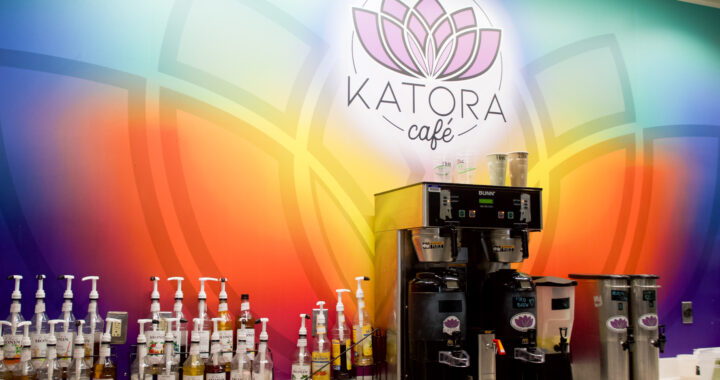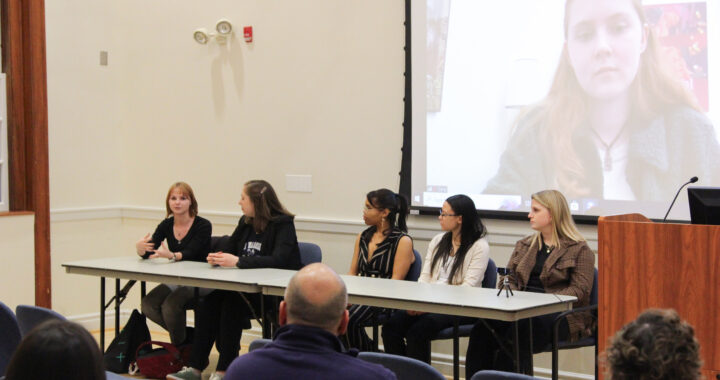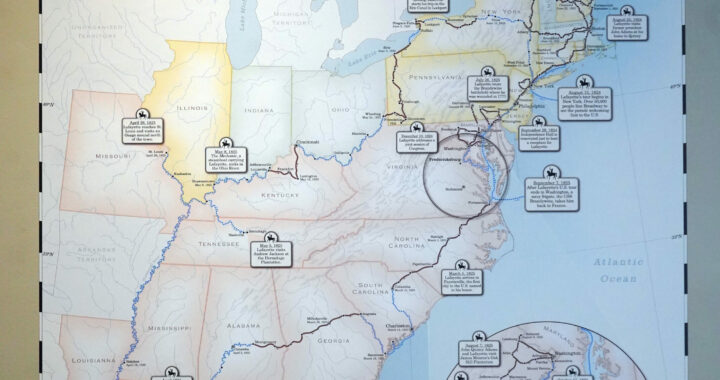Professor Takes Class on Trip to Geospatial Agency
3 min readBy CHINO TORRES
A select few University of Mary Washington students were treated to a day trip to the United States Government’s premier National Geospatial Intelligence Agency (NGA), located in Springfield, Virginia. They were under the guidance of Steven Hall, an adjunct professor of geography, who currently teaches UMW’s Remote Sensing class.
Hall’s trip to NGA was an opportunity for the students to see a briefing on the value of Geographic Intelligence (GEOINT) research and analysis. The students in attendance had to submit their personal information for review a week in advance because of the sensitive nature of the work being done there. NGA’s security is so strict that UMW’s Geographic Information Science (GIS) program director couldn’t attend the tour due to his Canadian citizenship.
The UMW students were from a variety of disciplines, including environmental sciences, geology, geography and mathematics. Remote Sensing, which is only available during the fall semester, is a requirement for students seeking the GIS certificate.
“Geographic Information Science is rightly a discipline unto itself and the home for GIS at Mary Washington just happens to be Geography,” said Brian Rizzo, associate professor of geography and the GIS program director. “The value of geospatial analysis is its role and utility in a liberal arts education; it permits the integration of applications from a range of disciplines that focus on the application, capture, management, analysis and display of spatial data.
For Hall’s students, the focus of the trip was on how their understanding of imagery analysis was put into practice at a national level intelligence agency. The duties of an image analyst typically involve the interpretation of computer maps using specialized software as well as traditional paper maps, according to Hall.
They employ a wide range of techniques and methods that allow them to manipulate the image in an effort to better identify features on the map.
This enables them to assess change over time, as well as the type and nature of activity within an area.
GIS can be applied to several fields, including forestry, ecology, hydrology, geology and urban planning.
According to the Department of Labor’s “High Growth Job Training Initiative,” geospatial technology was one of 14 sectors identified as adding substantial numbers of new jobs to the economy, affecting the growth of other industries and requiring new skill sets for workers in existing and emerging businesses that are being transformed by technology and innovation.
The students also had a brief and rare chance to see the Director of the NGA, Letitia Long, who has been conducting research and intelligence work since 1978. She was enthused to have visitors from UMW and encouraged continued interest and work in the sciences as well as participating in the agency’s internship program. Currently, the agency is finishing an open season for their internship program and they have been seeking college students.
“[Meeting Long was] an excellent opportunity for graduating seniors or younger students who have an affinity in imagery analysis/GIS-related intelligence work,” said Jacqueline Gallagher, associate professor of geography. “Not only does it open the door to experience working in the intelligence community, but you are given an uncommonly high security clearance that can open possibilities elsewhere.”
Julia Wood, one of the students who attended the trip, was surprised by how much she learned.
“I hadn’t realized how integral GIS and Remote Sensing are to people’s lives, especially when it came to the government and the military,” said Wood. “Most importantly, it was inspiring to see GIS being applied to people’s lives as both a career but also in assisting with so many projects that will help the government and its citizens understand the world we live in better.
The mission of NGA is to provide, “geospatial intelligence in support of national security,” according to their website. In the Remote Sensing class the students are exposed to the “science of collecting information on an object when not in direct contact with the object,” according to Hall.











